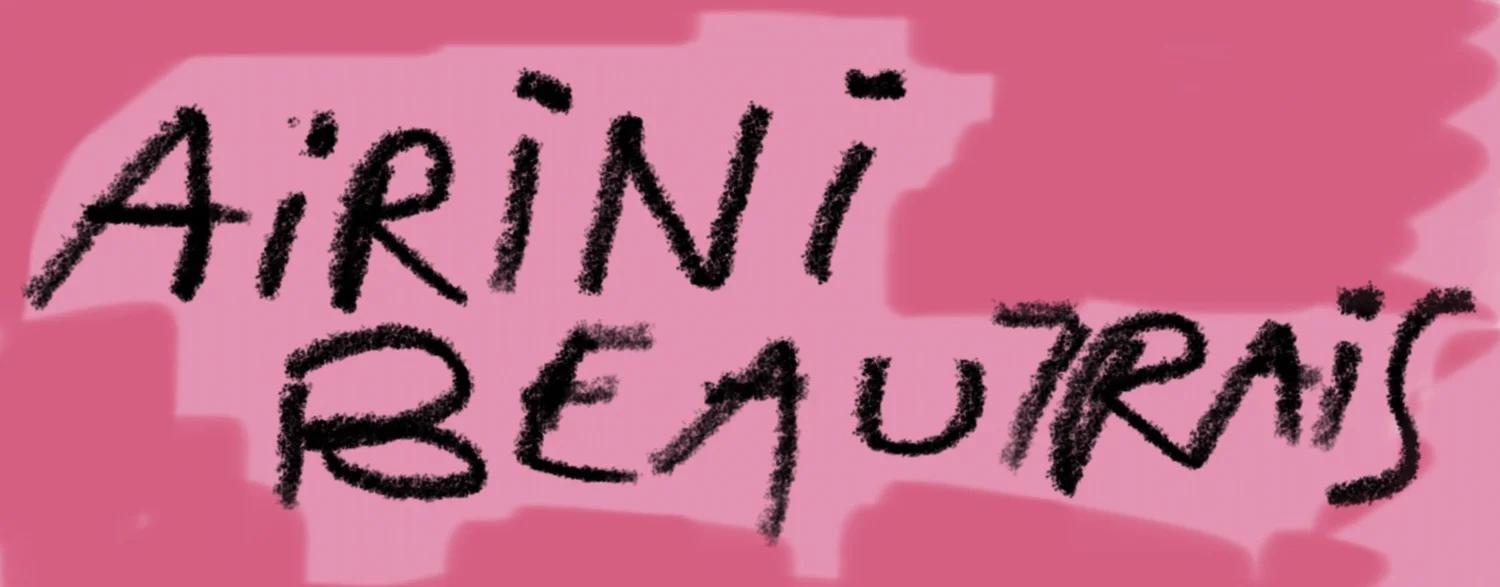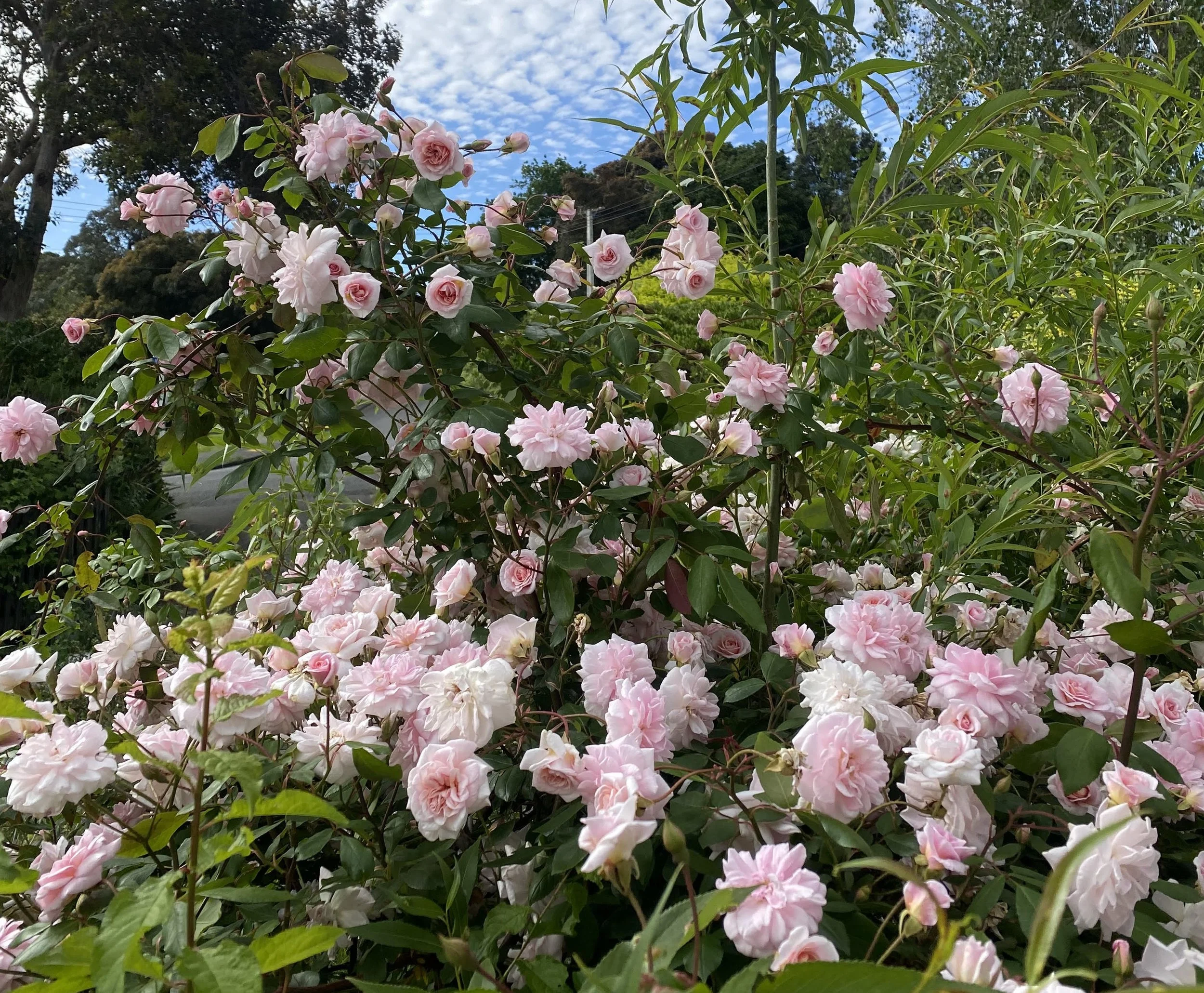The Wheel of the Year
Last Friday, 31 October, I put some lollies and other items in a basket, and went out into my garden. As I weeded couch grass, little costumed characters appeared in the driveway: Witches, ghosts, burritos, Mario and Luigi. I let them choose something from the basket. The apple, carrot, salami and cheese all got eaten. So did a bunch of lollies. I don’t feel great about giving other people’s children sugar, having seen the after-effects of my own children eating about a kilo of it in the back seat of the car after ‘Trunk or Treat,’ while my back was turned. The come-down was intense. But as one of my own kids was currently out roaming the streets trick-or-treating with friends, I felt it was only fair for me to contribute.
As I weeded, the earth breathed vitality all around me. This time of year, as my dad says, is ‘peak photosynthesis.’ Deciduous trees have come into leaf. Roses are flowering. The evening air hovers with insects. Goldfinches feed on the puha seed heads. Frogs are croaking in the local lakes and ponds. The air feels fecund.
Cecile Brunner rose - So fecund right now
I believe we can celebrate whatever we want, whenever we want. If you want to celebrate your own birth on any day of the year, why not? If you want to celebrate Easter and Christmas at the calendar dates that align with the Christian church around the world, that makes sense. But the Wheel of the Year is different – because it is literally the Wheel of the Year – a series of festivals based on the sun. The eight spokes of the wheel are aligned with the solstices, equinoxes, and the ‘cross-quarter’ festivals which fall half-way between these points. The sun does hemispheres. On the Summer Solstice (June solstice) in the Northern Hemisphere, the sun appears to reach its highest position in the sky, and is directly overhead at the Tropic of Cancer. On the Summer Solstice (December solstice) in the Southern Hemisphere, the sun appears to reach its highest position in the sky, and is directly overhead at the Tropic of Capricorn. The vernal and autumnal equinoxes – when the sun is directly overhead the equator – also occur at opposite times depending which hemisphere you are in, due to the difference in seasons.
Halloween is celebrated at the end of October, and is often conflated with a related Celtic festival, Samhain. Friday, October 31st was not ‘Samhain’ in Aotearoa New Zealand, because Samhain is the cross-quarter festival that occurs between the autumnal equinox and the Winter solstice. This year (2025), the Southern Spring or vernal equinox occurred on the 23rd September (also the start of Libra season in the tropical zodiac) and the Southern Summer solstice will take place on the 22nd December, the start of tropical Capricorn season. Being about half way between these two dates means it is – you guessed it – Beltane! That’s why all the human children and baby animals are so full of beans. Because the Gregorian calendar is not aligned to any particular astronomical events, the calendar dates for the Wheel of the Year will be slightly different each year. This year, Southern Beltane technically falls on the 7th November.
I think of Beltane as a time of wild, beautiful, fertile, abundant chaos. It’s a time to dress up: not as something invoking death, but something invoking life, like the Green Man, May Queen, or Jack o’ the Green. It’s a time to light a fire, jump over it, to eat, drink and be merry, and if you are that way inclined, for raucous and uninhibited celebration. My personal celebration of Beltane tends to be gentler, and involves working in the garden, giving thanks for the abundance of life. Sometimes we have an outdoor fire.
A little Beltane fire in our garden, 2019
I learned about the Southern Wheel of the Year as a child, as we celebrated the solstices in particular in the community where I grew up. I can also remember dancing around a May pole at some point. Halloween was less of a thing for kids growing up in Aotearoa New Zealand in the 1980s and 1990s. However, it was more recently, within the last ten years, that the cognitive dissonance involved in seeing the Halloween costumes and plastic pumpkins against a backdrop of green leaves and bursting flowers, helped remind me of my spiritual connection with nature and started me back on a path of intentional ritual and celebration. I feel thankful for that.
What about the thinning of the veil, and the remembrance of the dead? My personal feeling is that while Samhain is the most seasonally appropriate time for this focus, if you have dead from the Northern Hemisphere, they might also want to connect with you around the time of southern Beltane, which is Northern Samhain. Last year, around this time, I spent a week mostly in isolation with a gastro bug. I ended up deep-diving into my family history and drawing family trees. I discovered ancestors I had not heard of before, places I didn’t know my family was from, and names that changed their spelling through the generations. In a time when I couldn’t be around the living, this connection felt vital. I felt held and loved by my ancestors.
I also feel that while both festivals are potent, Beltane is the one where more chaotic energies could potentially emerge. I would be careful of doing any spiritual practice that opens the door to anything and everything. Just like I don’t want strangers on the internet knowing where I physically live, I don’t want weird shit from the ether turning up on my doorstep!
The year that we went to Trunk or Treat and the kids ended up in a bad sugar comedown, an American family dressed up in a spring theme, decorated their car boot accordingly, and set up a May pole. Another year, I went to a Halloween party dressed as a green goddess. Like the pōhutukawa being the ‘Christmas tree’ of Aotearoa, I think there are ways to hybridise festivals that keep everyone happy. Personally, I am deeply uncomfortable with what I think of as the ‘capitalist calendar’ which is mostly about profit, at the expense of the environment, and of the people who make the cheap, mass-produced tat we are encouraged to buy. For me, connecting with the Wheel of the Year is a way of honouring the earth. It is a way of being connected to nature, to understanding its rhythms and cycles, as well as the seasonal changes we experience, such as changes in mood and energy levels. It helps us to be better to the earth and to ourselves. It gives us eight celebrations. And it doesn’t have to cost anything: all you need is yourself and nature.


